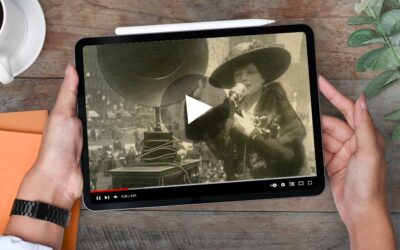How to Create a Plan for Museum CMS Data Enhancement

Rachael Cristine Woody
Today we will continue our exploration of museum data enhancement. This post will offer tips on how to create a plan.
Data enhancement is both the enhancement of existing data in required fields and the creation of data for areas of the object record that fall into the recommended section of descriptive best practices. As such, data enhancement is an optional activity, but one that has the power to improve the discoverability of objects in the museum Collections Management System (CMS). So far, we’ve reviewed the common fields targeted for enhancement and how to evaluate the CMS data for enhancement opportunities.
Where do you begin?
Once you’ve identified the fields you wish to work in, and the scope of objects within the collection—also known as the enhancement opportunities—it’s time to put together a plan. To refresh, the common fields targeted for data enhancement are:
- Biographies or Historical Notes
- Description
- Provenance
- Related Materials
- Subjects
- Places
For each of the areas you intend to work in you will need to identify sources of information to consult that will aid in enhanced data creation.
Where is the Information?
One of the first things to figure out is where the information that can help inform your data enhancement resides. Specifically, we need to know:
- What information exists?
- Where can we find existing information?
What information exists, if any?
Before you begin, attempt to gather all known sources of information.
The following are common informational resources to gather specific to your scope of objects:
- Articles
- Books
- Encyclopedic references
- Scholarly work
- Archival materials
- Exhibit catalogs
- Previous card catalogs or inventories
- Accession paperwork
- Any other information that could inform your work
Where can we find existing information per field?
When considering the typical fields of focus, here are the common informational resources that could shed light within each respective field:
- Biographies or Historical Notes
- Research from articles, books, archives, encyclopedic and scholarly resources, etc.
- Description
- Research from articles, books, archives, exhibit catalogs, encyclopedic and scholarly resources, etc.
- Further review and research into the object, the creator, the cultural community, the historical context, etc.
- Review of past catalog records, inventories, and other museum or previous owner paperwork.
- Provenance
- Research from related archives and reviewing purchase paperwork, accession files, donor files, past inventories, and past catalog records.
- Related Materials
- Research from articles, archives, and other scholarly resources.
- Subjects
- Further review and research into the object, the creator, the cultural community, the historical context, etc.
- Places
- Further refinement of where the item was created and which cultural community was present at that time.
Create a Plan for Enhanced Data Creation
Now that you’ve identified areas of focus and their respective informational resources, it’s time to make a plan. Gather details to answer the following:
- Which informational resources will you gather?
- When will you perform your research and synthesis of the information?
- How long will you need for the research and gathering phase of work?
- How will you capture the data destined for the CMS?
- How many objects will you perform enhancement work on?
- How long will it take you to create enhanced data?
- How will you enter the enhanced data into the CMS?
For each answer, do your best to approximate the time and duration of each activity. This will help account for how the work will fit into your current workload and, from there, establish a timeline for the project.
Conclusion
We’ve now completed the important work necessary to help scope our data enhancement project. With considerations to fields of interest, object areas of focus, and identification of existing information—and how it can inform our work—we have a sense of scale. Then, with answers to the plan prompts, we now have enough information to formalize our plan for data enhancement. Next week we will cover some final tips for how to perform data enhancement work.

Rachael Cristine Woody
To learn more, please join us for a free webinar How to Perform Data Enhancement for Your Museum CMS Wednesday, May 29 at 11 a.m. Pacific, 2 p.m. Eastern. (Can’t make it? Register anyway and we will send you a link to the recording and slides afterwards). Register now.
Never miss another post. Subscribe today!
Similar Posts
The CMS Digital Exhibit and Story Pathways
Digital exhibits provide powerful ways to engage audiences, but choosing the right story pathway is key. Explore how different exhibit structures—linear vs. multi-pathway—shape the visitor journey.
Captivating Story Delivery with a Multimedia Player
Explore how museums can enhance storytelling with multimedia players, using audio-visual materials and archival content to create engaging digital narratives.
How to Use Slideshows and Flipbooks to Offer Engaging Museum Story Visuals
Museums thrive on storytelling, and the right digital tools can make all the difference. Slideshows and flipbooks offer an engaging way to showcase collections, drawing visitors in with dynamic visuals and interactive elements.
Zooming Into Story Details:
How Museums Can Enhance Storytelling with Visual Tools
Visual tools such as zoom are crowd pleasers when presenting visual content online, allowing museums to create immersive and engaging digital experiences.




Leave a Comment
Comments are reviewed and must adhere to our comments policy.
0 Comments